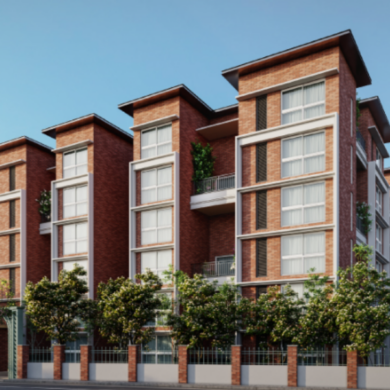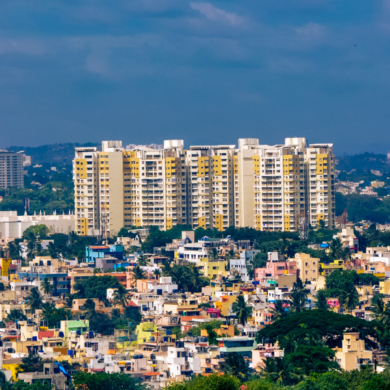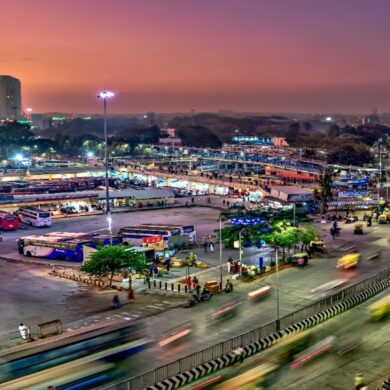How to Register a Property in Mumbai: Step-by-Step Guide
October 22nd, 2025

Understanding how to register property in Mumbai is the key to safeguarding ownership rights, ensuring legal compliance, and completing every step seamlessly under Maharashtra’s property laws.
Mumbai’s property landscape continues to evolve, blending heritage with modern development. As one of India’s most dynamic real estate markets, it attracts professionals, investors, and families seeking long-term security through ownership.
Understanding how to register property in Mumbai is essential for anyone looking to safeguard ownership rights and avoid future disputes. Registration not only validates the purchase, but also provides public record authenticity.
Table of Contents
Understanding Property Registration in Mumbai
A. Legal Importance and Mandatory Nature
Every transaction involving immovable property in Mumbai must pass through a legally recognised registry to attain validity. Understanding how to register property in Mumbai ensures that the ownership change is reflected in the public record, as per the Maharashtra Stamp Act and Registration Act.
A registered document becomes binding against third parties, thereby safeguarding the rights of the purchaser. The legal framework demands that documents such as sale deeds, gift deeds, and mortgage deeds be registered for enforcement.
B. Maharashtra Registration Act Overview
The Indian Registration Act of 1908, as extended and applied in Maharashtra, mandates registration for certain classes of documents relating to immovable property. It also applies state-level statutes regulating stamp duty, and uses the IGR Maharashtra system for collection and verification.
The state defines how these transactions are validated, making this a required step in the property registration Mumbai process.
C. Benefits of Proper Property Registration
Understanding how to register property in Mumbai confers multiple benefits and helps you follow the legal framework effectively. It provides legal proof of ownership that multiple courts will accept as valid, making property disputes easier to resolve. It enables easier access to financing, since banks prefer a registered title for home loan approval.
D. Consequences of Non-registration
Failing to follow the Mumbai property registration procedure can lead to serious consequences. The unregistered document carries no legal weight, so you cannot prove ownership in court. You may face difficulties or an outright refusal from banks or future buyers, while selling or mortgaging the property.
Fraudulent claims or disputes by third parties become harder to contest. Also, authorities may impose penalties, and the transaction may be treated as invalid.
Pre-registration: Essential Preparations
-
Property Title Verification Process
Begin by verifying the title, to ensure the sale is clean and dispute-free. Use the IGR Maharashtra portal’s e-search tool to check past transactions and encumbrances. Refer also to the Mahabhulekh portal (property cards, 8A extracts) to confirm current ownership and land data. If any previous sale deeds, mortgages, or liens appear, engage a legal expert to resolve discrepancies before proceeding.
These steps reduce the risk of fraudulent transactions and ensure transparency in how to register property in Mumbai.
-
Document Collection and Verification
Gather all property registration documents Mumbai such as the previous sale deed, title deed, survey sketch, tax receipts, and NOC from society or municipal authority (if required). Demand certified copies and ensure consistency across names, dates, and property descriptors. If multiple owners or inherited rights exist, ensure family partition documents or legal succession papers are in place.
Verify each document against the title search report. Confirm that property boundaries, dimensions, serial numbers (e.g. CTS, survey) match those in municipal records. Mistakes or discrepancies here can cause delays or rejection in the registration process.
-
Stamp Duty and Registration Charges Calculation
Determine these fees by using online calculators from realty portals or the IGR Maharashtra portal, to estimate your costs accurately.
-
Sub-registrar’s Office Selection
Choose the relevant office that has jurisdiction over the area where the property is located. The registration must occur in the office corresponding to the property’s location, not the buyer’s or seller’s addresses. Check schedules and operational hours of the Sub-registrar’s Offices on the IGR Maharashtra website, to understand how to register property in Mumbai without delays.
Step-by-Step Registration Process
Step 1: Document Preparation and Verification
Understanding how to register property in Mumbai begins with drafting the sale deed and supporting papers. Parties must clearly state property description, ownership history, and agreed price as per step-by-step property registration Mumbai.
Submit all documents for preliminary verification – names, signatures, property boundaries must align with title search. Any mismatch may lead to rejection or delay.
Step 2: Stamp Duty Payment Methods
Compute the required stamp duty (e-stamp or physical stamp) and registration fee based on ready reckoner value or transaction value, whichever is higher.
Make payment using GRAS / eSBTR via designated banks or the IGR Maharashtra portal. Maharashtra has introduced an e-bond system permitting online stamp duty payment.
Step 3: Online Appointment Booking
After payment, schedule a slot on the e-StepIn / IGR Maharashtra portal to visit the Sub-registrar’s Office. Once booked, the portal issues a token ID and time slot. This digital appointment procedure has reduced queues and improved transparency for residents following how to register property in Mumbai under the state’s new digital reforms.
Step 4: Visiting the Office
On the appointed day, meet the Sub-registrar’s team with all original documents. The officials will inspect and verify them against digital records. Present witnesses and proof of payment; submit the deed for execution.
Step 5: Biometric Verification and Signing
The next step in how to register property in Mumbai involves biometric verification of all parties – buyers, sellers, and witnesses. Signatures, photographs, fingerprint or thumb impressions of all parties are collected. IGR Maharashtra uses biometric authentication to validate identities.
Step 6: Registration Completion and Receipt
After verification and signing, the document gets a unique number and is entered into government registers. You receive a receipt or acknowledgment. The registered deed may take a few days for physical collection. This marks the final confirmation of ownership under the lawful process of how to register property in Mumbai.
Required Documents Checklist
-
Buyer Documents and Identity Proofs
Before understanding how to register property in Mumbai, buyers must gather valid identification proofs such as Aadhaar card, PAN card, passport, voter ID, or driving licence. Passport-size photographs are also required. If a Power of Attorney (POA) holder signs on behalf of the buyer, a registered POA document and attested copy must be presented.
When a bank funds the purchase, include the loan sanction letter and financing details. Ensure names, addresses, and signatures match exactly on every document to avoid delays.
-
Seller Documents and Ownership Proofs
If you are wondering how to register property in Mumbai, you need to submit the original title deed or mother deed establishing ownership history. Also provide PAN, Aadhaar, and other identity proofs. In inherited or jointly owned assets, succession papers or partition deeds help prove undisputed rights.
If acting through an attorney, attach the valid POA document and ensure it is legally registered. Verifying that the property carries no mortgage or legal claim safeguards the transaction from disputes later.
-
Property-related Documents
Compile all documents such as sale agreement, earlier transfer deeds, 7/12 extract or property card, and municipal tax receipts. Include the approved building plan, occupancy certificate, and completion certificate for constructed units.
Documents required for property registration Mumbai also include NOC from housing society or municipal authority, and encumbrance certificate confirming a clear title. This supports authenticity while determining how to register property in Mumbai through legal channels.
-
NRI and OCI Specific Requirements
Non-resident Indians or Overseas Citizens of India must provide notarised and apostilled ID and address proofs. If using a POA, ensure it is executed at an Indian consulate and later registered locally. They should also present NRO / NRE bank account details, tax declarations, and proof of inward remittance.
Also Read: Documents Required to Buy a Flat in Mumbai: A Complete Buyer’s Checklist
Stamp Duty and Registration Charges 2025
Current Rates in Mumbai
In 2025, stamp duty charges in Mumbai are 6% for men, 5% for women, and 5.5% for joint ownership – all of which is inclusive of 1% metro cess. Property type and government schemes may affect the rate. Mumbai property registration charges 2025 are 1% of property value, capped at ₹30,000 for properties valued above ₹30 lakh.
Women buyers enjoy 1% stamp duty concession, though registration fees remain unchanged.
Payment Methods and Online Options
You may make stamp duty payments via GRAS (Government Receipt Accounting System), eSBTR, or through authorised banks. From 2025, Maharashtra introduced an e-bond system, allowing citizens to pay stamp duty and obtain e-stamp certificates online – removing reliance on physical stamp vendors.
After online payment, you can proceed with scheduling registration. This digitised flow simplifies how to register property in Mumbai and reduces delays.
Legal Compliance and Verification
Before beginning the process of how to register property in Mumbai, confirm the project’s registration on the official website of Maharashtra RERA Authority – to ensure compliance with legal and financial requirements. Buyers should also obtain encumbrance certificate online through IGR Maharashtra website to confirm the property is free from liabilities or claims.
Verify the title deed against municipal and land records, to establish clear ownership and secure a No Objection Certificate from the housing society or municipal body. These verifications ensure lawful transfer, protect buyer interests, and uphold transparency throughout the registration process.
Common Challenges and Solutions
Minor errors in property documents – such as mismatched names, survey numbers, or inaccurate dimensions – can lead to delays during the process. Ensuring all details are verified and consistent across records is essential to avoid rejection or rework at Sub-registrar’s Office. To prevent such issues, buyers should engage a legal professional to cross-check sale deeds, encumbrance certificates, and tax receipts before submission.
Post-registration Procedures
After completing the registration, collect the registered sale deed from the Sub-registrar’s Office or download it via the IGR portal. Then apply for property mutation, transfer utility connections, and obtain society membership approval to ensure smooth ownership transfer and updated legal, municipal, and utility records.
Conclusion
Understanding how to register property in Mumbai plays a crucial role in establishing lawful ownership, safeguarding your investment, and ensuring complete transparency in every transaction. By following the right steps, verifying documents, and ensuring compliance with Maharashtra’s registration laws, buyers can complete transactions confidently and establish a transparent, dispute-free foundation for long-term property ownership in Mumbai.
FAQs
Which documents are required for property registration in Mumbai?
Documents required for property registration in Mumbai include sale deed, title deed, previous ownership papers, approved building plan, encumbrance certificate, tax receipts, and valid identity proofs of buyers and sellers. Verifying these beforehand simplifies the process of how to register property in Mumbai and ensures error-free submission.
How much is the stamp duty for property registration in Mumbai?
Stamp duty for property registration in Mumbai is 6% for males, 5% for females, and 5.5% for joint ownership.
How long does property registration take in Mumbai?
Property registration in Mumbai usually takes 1-3 working days after verification and biometric approval.
Can property registration be done online in Mumbai?
Property registration can be done online in Mumbai through the IGR Maharashtra portal at https://igrmaharashtra.gov.in/Home which supports stamp duty payment, appointment booking, and digital verification. It provides an easy, step-by-step guide on how to register property in Mumbai digitally. However, visiting the Sub-registrar’s Office is mandatory.
What is the registration fee for property in Mumbai?
The registration fee for property in Mumbai is 1% of the property’s value, with a maximum cap of ₹30,000 for higher-value transactions.
Where to pay stamp duty for property registration in Mumbai?
Stamp duty for property registration in Mumbai can be paid through the GRAS or eSBTR portals, or via authorised banks linked with IGR Maharashtra.
What is the procedure for NRI property registration in Mumbai?
The procedure for NRI property registration in Mumbai includes submitting apostilled ID proofs, registering a notarised Power of Attorney, and completing registration through a local representative.
How to book an appointment for property registration in Mumbai?
An appointment for property registration in Mumbai can be booked using the e-StepIn feature on the IGR Maharashtra portal, which issues a time slot and token.
What happens if a property is not registered in Mumbai?
If a property is not registered in Mumbai, it is not legally recognised and cannot be used as proof of ownership or for resale and mortgage purposes.
How to verify property documents before registration in Mumbai?
To verify property documents before registration in Mumbai, check title and encumbrance details through the IGR Maharashtra or MahaRERA portals.










